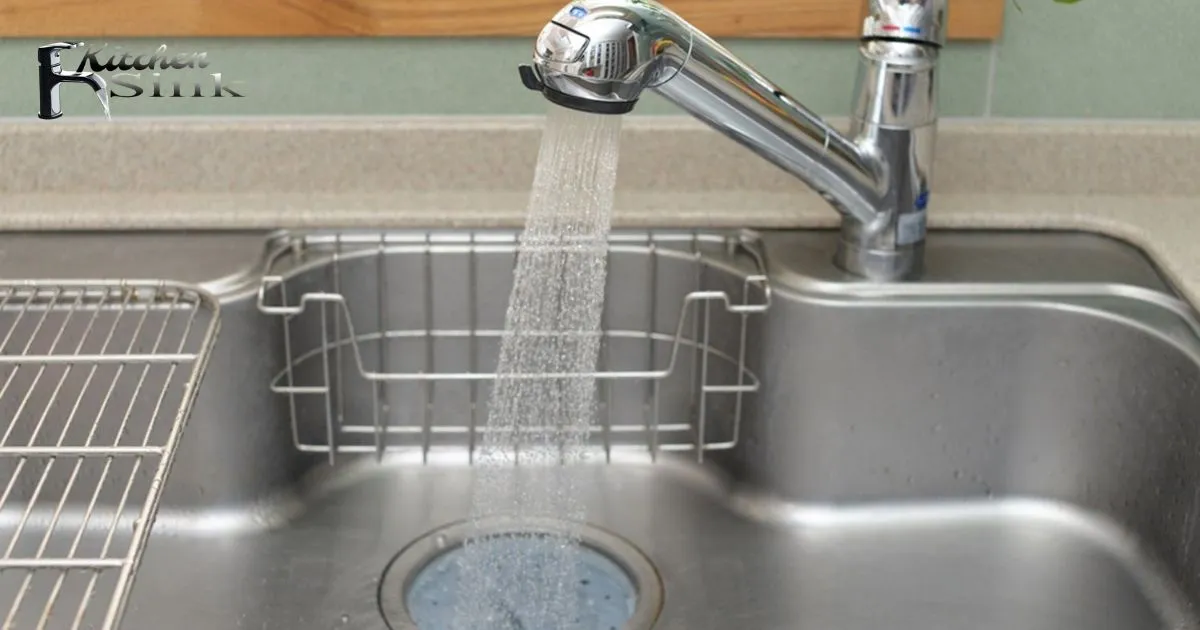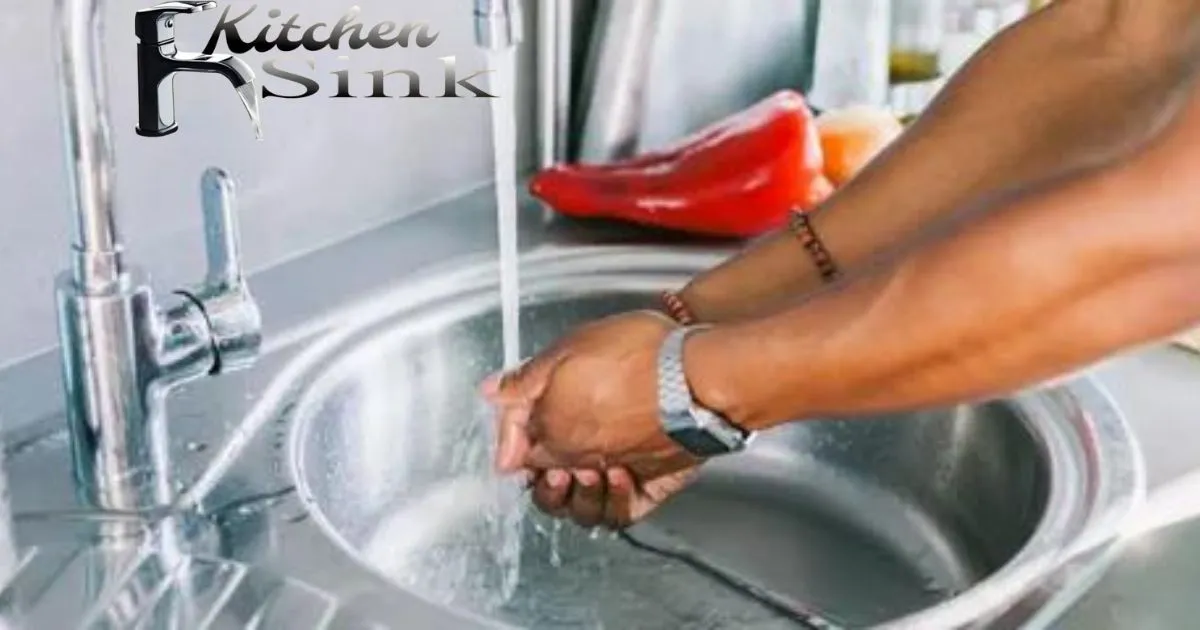It can be really annoying to have a weak water flow from your kitchen faucet. When you turn the handle to fill a kettle or wash your dishes, you anticipate a powerful stream, but all that comes out is a feeble trickle. Cooking becomes more challenging and fundamental duties are disrupted when your kitchen sink has low water pressure.
Low water pressure in a kitchen sink can have a number of reasons. The problem can come from inside the faucet, such as mineral buildup obstructing the aerator or jammed valves. Water flow might be restricted further back in the plumbing system by partially clogged pipes caused by silt accumulation or by corroding galvanized pipes.
Diagnosing the root cause of low kitchen sink water pressure takes some investigation into both the faucet hardware and home plumbing. But once the source of the problem is identified, solutions like a faucet aerator cleaning, piping upgrades, or replacing worn valves can typically restore normal water flow.
What Causes Low Water Pressure In Kitchen Sink
Having low water pressure in your kitchen sink can make basic tasks like washing dishes or rinsing vegetables incredibly frustrating. Just a weak trickle of water dripping out when you expect a strong flow to make quick work of cleaning.
So what causes low water pressure in your kitchen sink? There are several potential culprits depending on if the issue is isolated to just the kitchen faucet or all water sources in your home.
Common Causes of Low Water Pressure in Kitchen Sinks
Here are some of the most common causes of decreased water pressure from your kitchen faucet:
Clogged Faucet Aerator or Cartridge
The aerator at the tip of your faucet and the cartridge inside both contain small screens and valves that can get clogged over time with mineral deposits from hard water. This causes restricted water flow.
- Easy fix: Unscrew the aerator to clean out debris or replace the cartridge
Partially Closed Faucet Valves
If you have shut-off valves under the sink, one may have been bumped or jarred into a partly closed position without you realizing.
- Quick fix: Check that both hot and cold water valves are fully open
Leaking Water Supply Lines
Leaking from corroded or damaged supply lines reduces overall water pressure to the faucet. Water is escaping before it reaches your faucet.
- Permanent solution: Replace old supply lines with new leak-proof pipes
Issues with Main Water Supply
Systemic low water pressure throughout the house points to problems with your main water supply and piping:
- Faulty Pressure Reducing Valve (PRV): If the PRV isn’t functioning right, it can’t maintain the 25-60 PSI standard home pressure.
- Partially Closed Main Valve: The main shut-off valve may not be fully open after repairs or from accidental bumps.
- Undersized Pipes: If your home has outdated half-inch pipes, these restrict water flow compared to modern 3⁄4 or 1 inch pipes.
- Corroded Pipes: Old galvanized steel pipes corrode internally over decades, narrowing the width for water to pass through.
- Accumulated Sediment: Mineral deposits, sand, and debris build-up in pipes and water heater tanks, which narrows the width for water to flow.
Professional plumbing services are recommended for diagnosing and fixing systemic water pressure issues related to your home’s supply and piping infrastructure.
Low Water Pressure In Kitchen Sink Not Aerator
| Cause | Description | Solution |
| Partially closed valve | The water valve under the sink feeding the faucet may have been accidentally bumped into a partly closed position, restricting flow. | Check that both hot and cold angle stop valves under the sink are fully open (counter-clockwise). |
| Clogged faucet cartridge | Mineral deposits can build up inside the cartridge, blocking water flow even if the aerator is clean. | Remove and clean or replace the old cartridge. Installing a water softener system can help prevent hard water clogs. |
| Leaking pipes | Corroded and leaking pipes or supply lines leading to the faucet reduces water pressure. | Inspect under sink for leaks. Replace any old steel pipes with new flexible supply lines. |
| Whole house water pressure issue | If all faucets have low pressure, the problem is likely with the main supply and piping, not the kitchen faucet itself. | This requires professional diagnosis and repair of issues like the PRV, main valve, undersized pipes, corrosion, sediment, etc. A plumber can best determine and fix the root cause. |
Steps to Diagnose the Cause
Figuring out the root of the problem is key before attempting any fixes. Here are some steps you can take to diagnose low kitchen sink water pressure:
Check if Issue is Isolated to Kitchen
See if all other faucets, showers, and toilets in your home have normal high pressure. If it’s only your kitchen sink affected, start inspecting that specific faucet’s aerator, cartridge, valves and supply lines.
Compare Hot vs Cold Water Pressure
Turn on both hot and cold faucets separately to check if one has weaker pressure than the other. This points to issues with that hot water heater or supply line specifically.
Look Under the Sink
Inspect for signs of leaks, corrosion or crimps in the supply lines. Turn water on and check if valves are fully open. Remove the aerator and cartridge to check for clogs.
Check Water Pressure Gauge
Use a pressure gauge on an outdoor spigot to get PSI readings. Consistently under 60 PSI indicates whole house water supply issues with the PRV, main valve, piping or sediment build-ups.
Check for Plumbing Leaks
Inspect walls, floors and ceilings for water spots indicating leaks that contribute to low pressure. Also check the water meter for flow with all water turned off in house – movement indicates serious hidden leaks.
What Causes Low Water Pressure In Kitchen Sink Faucet
Low kitchen faucet water pressure has a few common culprits. The first is a clogged aerator screen. Mineral deposits and debris build-up can block the aerator over time. This restricts water flow even if other faucets have normal pressure.
Another cause stems from an old, damaged faucet cartridge. Internal parts wear out or get encrusted with sediment. This prevents the cartridge from regulating proper water flow volume and pressure. Supply line leaks also reduce the water reaching the faucet. Kitchen faucet water pressure relies on unobstructed pathways and leak-free pipes to flow correctly.
How to Increase Water Pressure
Here are both short-term quick fixes and long-term solutions to restore full water pressure:
Clean Faucet Aerators and Cartridges
- Unscrew aerator tip and remove internal screens/flow straightener to clean out trapped mineral deposits.
- To enhance the functionality of your kitchen, consider adding a convenient feature by installing a kitchen sink sprayer. Along with this upgrade, it’s advisable to replace old cartridges encrusted with build-up.
Open All Faucet Valves
- Make sure hot and cold water angle stop valves under sink are fully open (counter-clockwise).
- Open any upstream shut-off valves that feed kitchen faucet lines.
Replace Supply Lines
- Swap out old rusted steel pipes for new flexible supply lines, avoiding potential leaks.
- Ensure pipes are right 3⁄4” diameter to avoid flow restrictions from undersized 1⁄2” pipes.
Update Plumbing with PEX Piping
- For whole house water pressure fixes, repiping with PEX offers optimal water flow over older pipe types.
Install a Pressure Booster Pump
- A booster pump activates when pressure drops below set PSI to amplify flow from water mains.
Replace the Pressure Reducing Valve
- Faulty PRVs unable to regulate pressure properly should be replaced. A working PRV maintains consistent PSI.
Flush Pipes and Water Heaters
- Annual flushing removes accumulated sediment and minerals to optimize water flow.
Hiring a professional plumber is highly recommended for accurately diagnosing low water pressure causes and making needed fixes. They have the tools and experience to troubleshoot issues and restore full water flow pressure from your kitchen faucet and home plumbing system.
Low Water Pressure In Kitchen Sink Hot Water Only
Low water pressure from the kitchen faucet can be frustrating. But what if you only have weak water flow when using the hot tap? The issue likely lies with your hot water system.
Common culprits include sediment build-up inside the hot water heater tank. Mineral deposits and debris restrict outgoing flow. A failing temperature and pressure relief valve can also reduce hot water pressure to just one faucet.
If the kitchen is at the end of the hot water line, distance from the heater can result in drops in pressure. Diagnosing the specific cause allows a targeted repair, like flushing the tank or replacing old valves. This restores full pressure so hot water flows strongly to clean dishes and cook food.
FAQs About Low Water Pressure in Kitchen Sinks
What PSI level is considered low water pressure?
- The standard water pressure range for residential homes is 25-60 PSI flowing into the main. Below 25 PSI results in noticeably low pressure and flow.
What flow rate do kitchen faucets need?
- The recommended water flow rate from kitchen faucets is 1.5 to 2.5 gallons per minute (GPM). Flow rates under 1 GPM will seem low pressure.
Can low water pressure damage pipes?
- Yes, consistently high or low pressure can both damage pipes long-term. Fluctuating pressures cause pipes to expand and contract leading to cracks and leaks over time.
Why does my kitchen sink have low pressure with hot water only?
- Issues like sediment build-up and faulty temperature and pressure relief valves on your hot water heater can lead to decreased hot water pressure specifically at the kitchen faucet.
Can running multiple fixtures cause low water pressure?
- Yes, using several fixtures at once (e.g. dishwasher, washing machine and shower) can temporarily decrease water pressure due to demand exceeding supply.
Key Takeaways
- Low kitchen faucet water pressure can result from isolated issues like clogged aerators or whole house problems with supply plumbing.
- Diagnose the root cause by checking if other faucets have flow issues, inspecting under the sink, gauging PSI rates, and looking for leaks.
- Fixes range from clearing faucet clogs and opening valves to replacing PRVs, updating pipes, adding booster pumps, and annual flushing.
- Professional plumbers have the specialized tools and know-how to fully diagnose issues and make all needed repairs.
Restoring full water pressure to kitchen sink washing dishes and preparing food much easier. Identify the underlying cause to determine if it’s a quick DIY fix or requires a whole-home plumbing overhaul by a professional to optimize your water flow rates.



